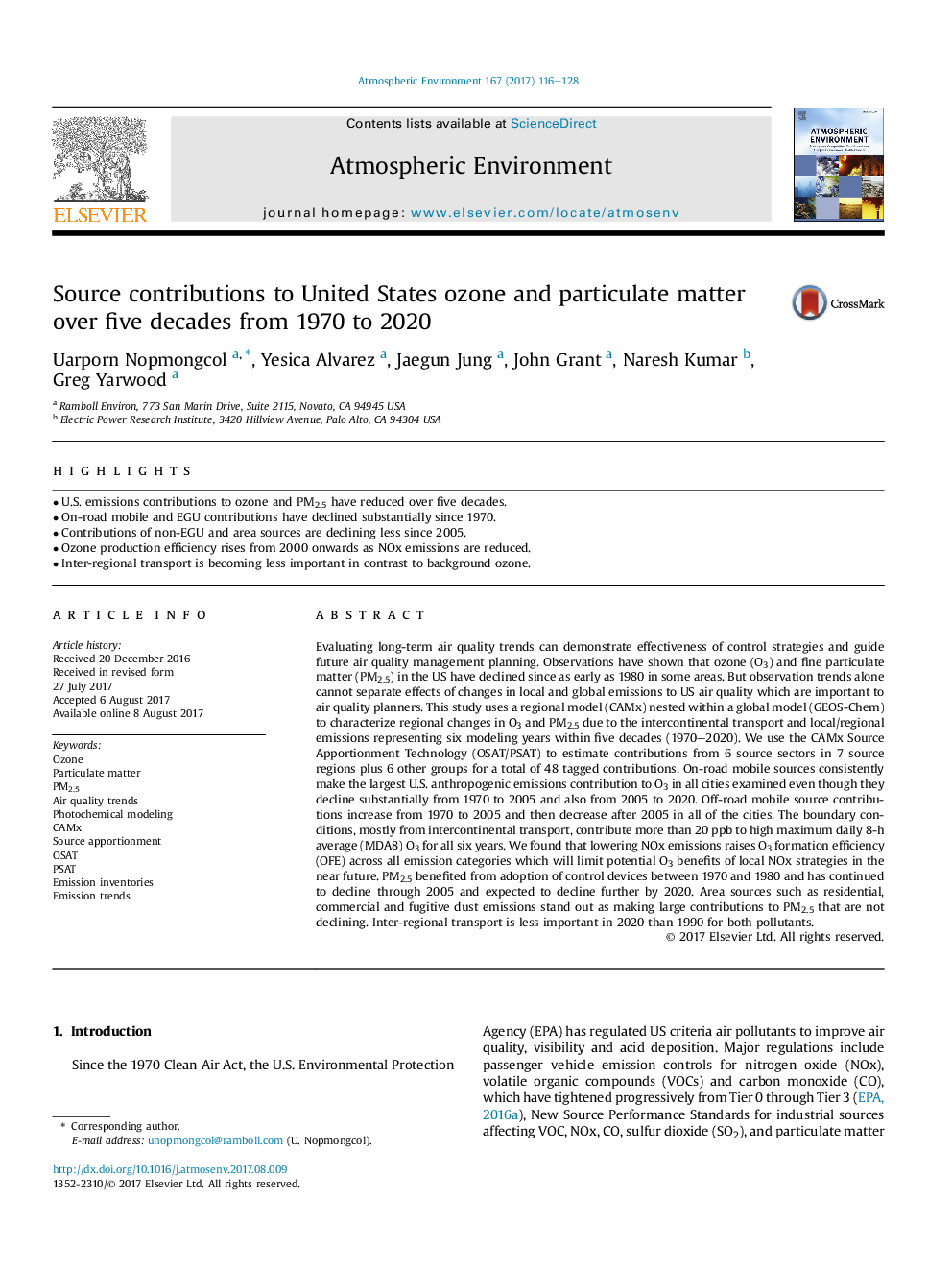| کد مقاله | کد نشریه | سال انتشار | مقاله انگلیسی | نسخه تمام متن |
|---|---|---|---|---|
| 5753056 | 1620307 | 2017 | 13 صفحه PDF | دانلود رایگان |
عنوان انگلیسی مقاله ISI
Source contributions to United States ozone and particulate matter over five decades from 1970 to 2020
ترجمه فارسی عنوان
کمک های منبع به اوزون و مواد معدنی ایالات متحده در طول پنج دهه از سال 1970 تا 2020
دانلود مقاله + سفارش ترجمه
دانلود مقاله ISI انگلیسی
رایگان برای ایرانیان
کلمات کلیدی
موضوعات مرتبط
مهندسی و علوم پایه
علوم زمین و سیارات
علم هواشناسی
چکیده انگلیسی
Evaluating long-term air quality trends can demonstrate effectiveness of control strategies and guide future air quality management planning. Observations have shown that ozone (O3) and fine particulate matter (PM2.5) in the US have declined since as early as 1980 in some areas. But observation trends alone cannot separate effects of changes in local and global emissions to US air quality which are important to air quality planners. This study uses a regional model (CAMx) nested within a global model (GEOS-Chem) to characterize regional changes in O3 and PM2.5 due to the intercontinental transport and local/regional emissions representing six modeling years within five decades (1970-2020). We use the CAMx Source Apportionment Technology (OSAT/PSAT) to estimate contributions from 6 source sectors in 7 source regions plus 6 other groups for a total of 48 tagged contributions. On-road mobile sources consistently make the largest U.S. anthropogenic emissions contribution to O3 in all cities examined even though they decline substantially from 1970 to 2005 and also from 2005 to 2020. Off-road mobile source contributions increase from 1970 to 2005 and then decrease after 2005 in all of the cities. The boundary conditions, mostly from intercontinental transport, contribute more than 20Â ppb to high maximum daily 8-h average (MDA8) O3 for all six years. We found that lowering NOx emissions raises O3 formation efficiency (OFE) across all emission categories which will limit potential O3 benefits of local NOx strategies in the near future. PM2.5 benefited from adoption of control devices between 1970 and 1980 and has continued to decline through 2005 and expected to decline further by 2020. Area sources such as residential, commercial and fugitive dust emissions stand out as making large contributions to PM2.5 that are not declining. Inter-regional transport is less important in 2020 than 1990 for both pollutants.
ناشر
Database: Elsevier - ScienceDirect (ساینس دایرکت)
Journal: Atmospheric Environment - Volume 167, October 2017, Pages 116-128
Journal: Atmospheric Environment - Volume 167, October 2017, Pages 116-128
نویسندگان
Uarporn Nopmongcol, Yesica Alvarez, Jaegun Jung, John Grant, Naresh Kumar, Greg Yarwood,
